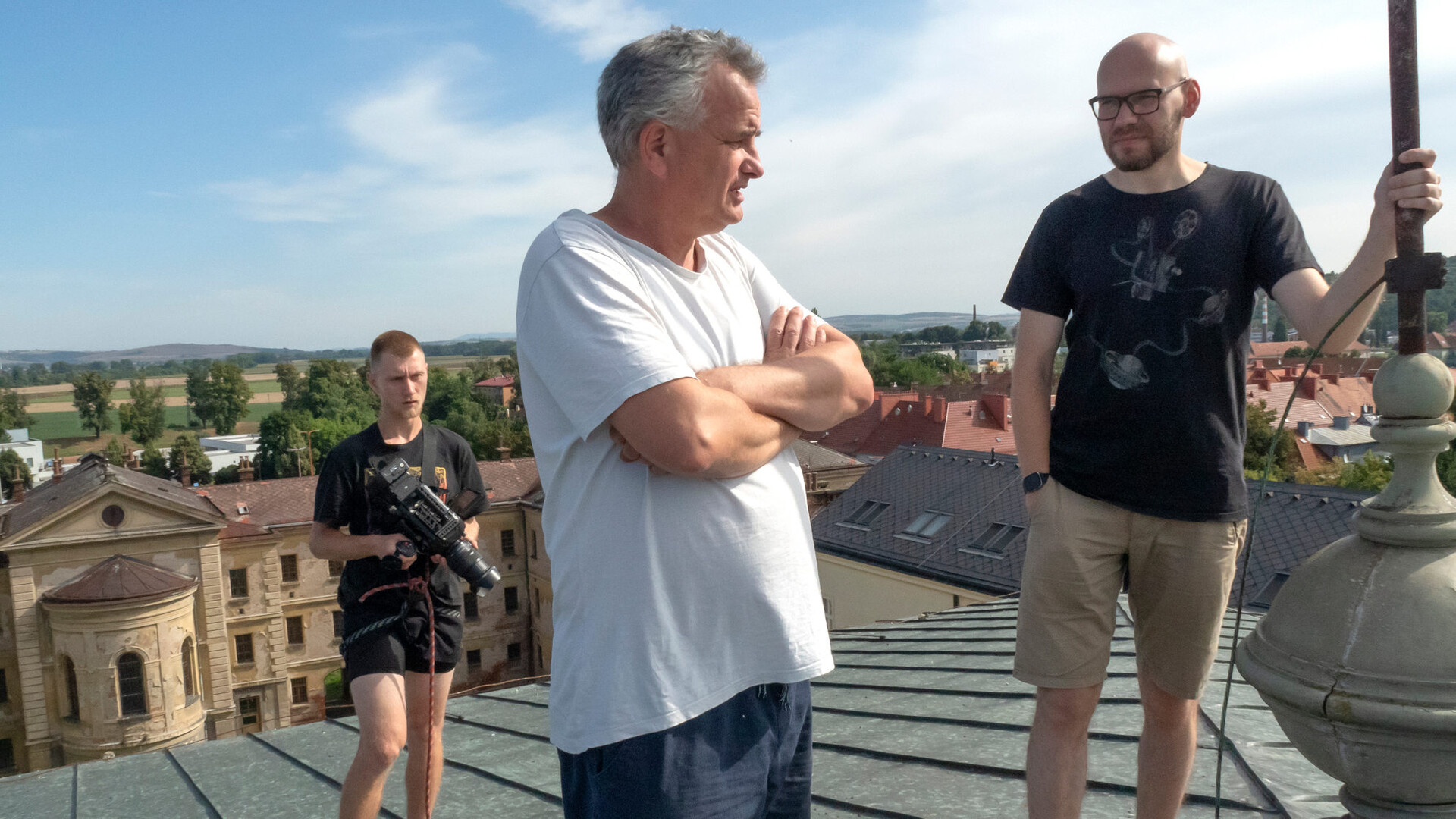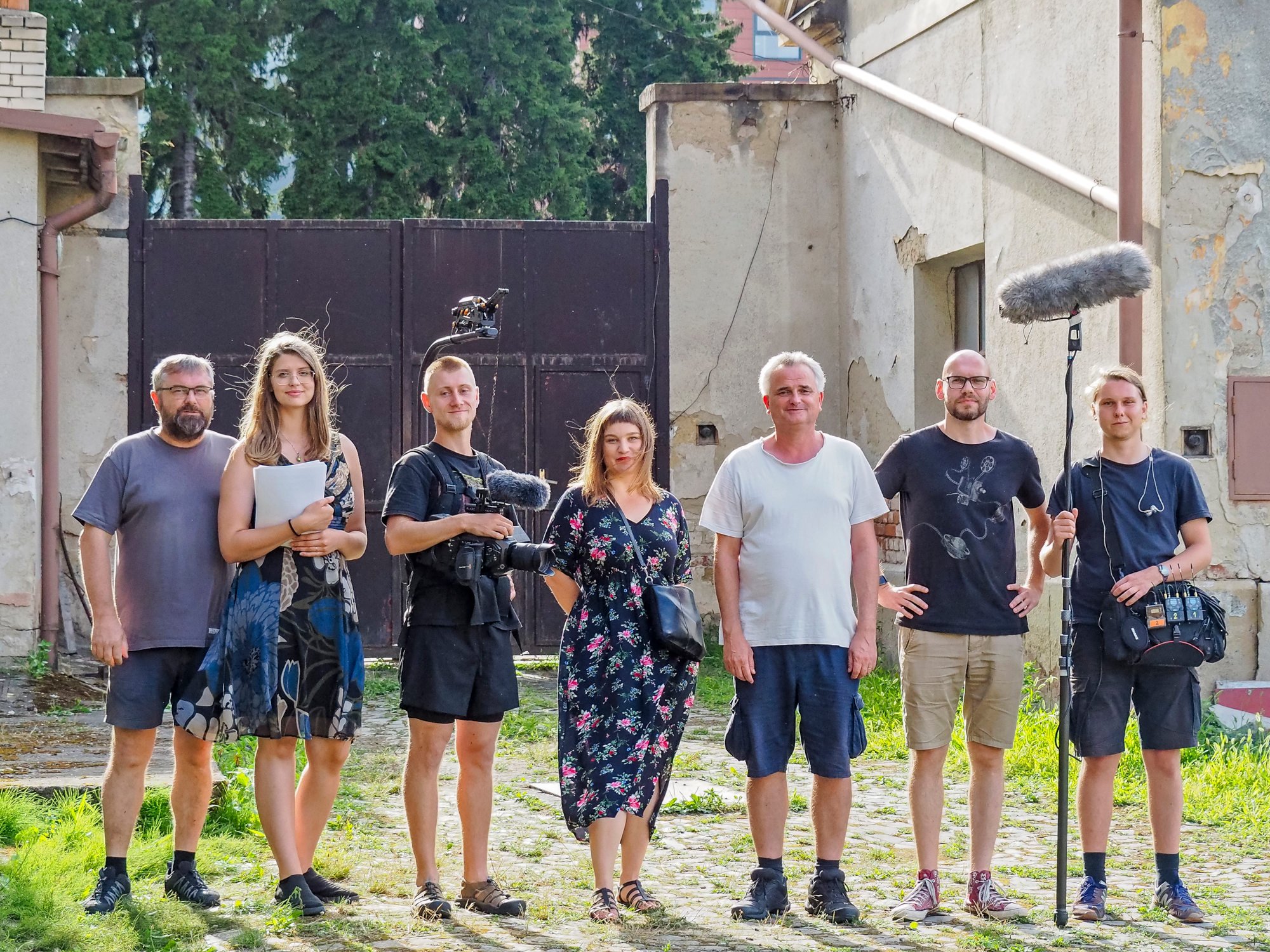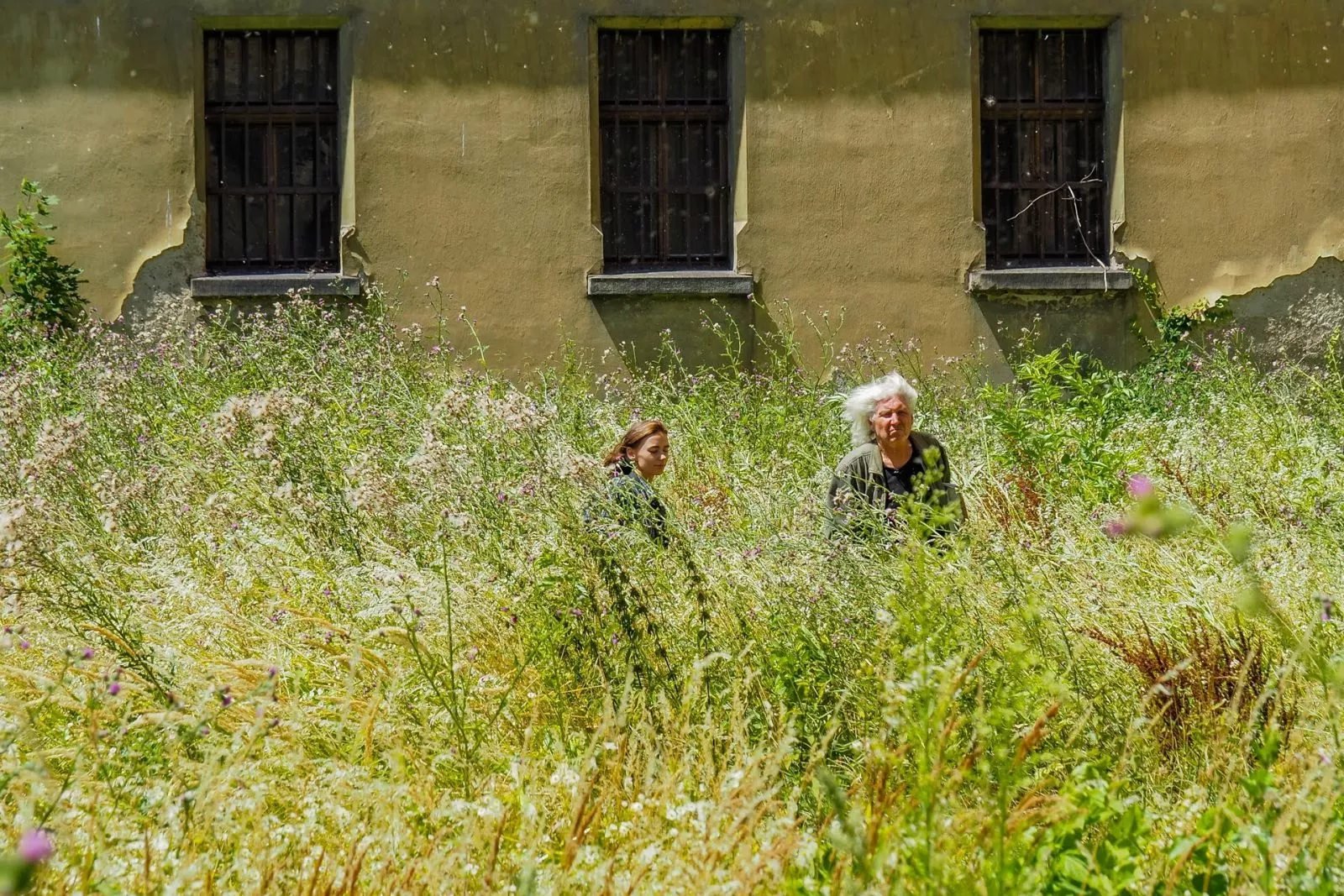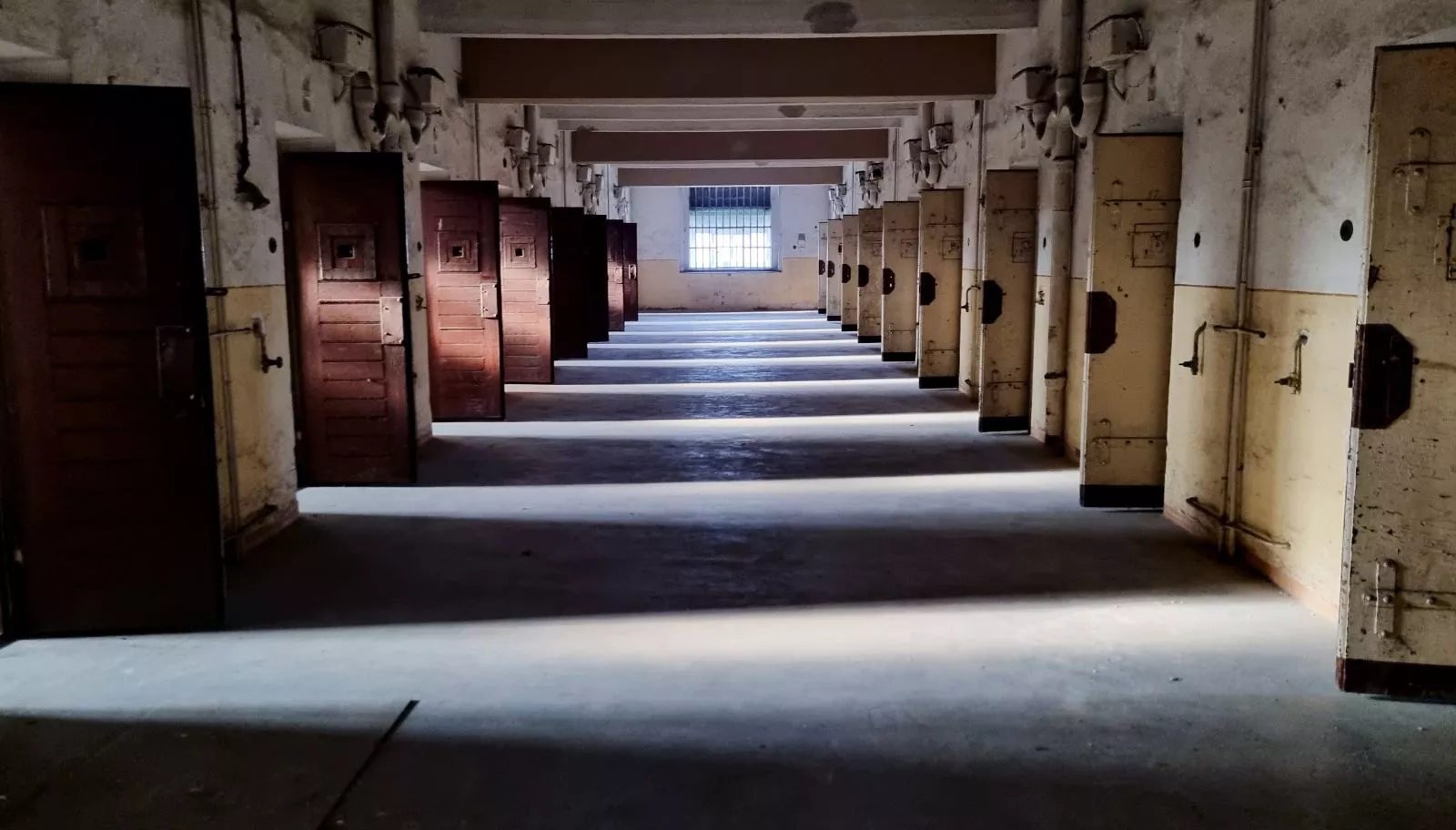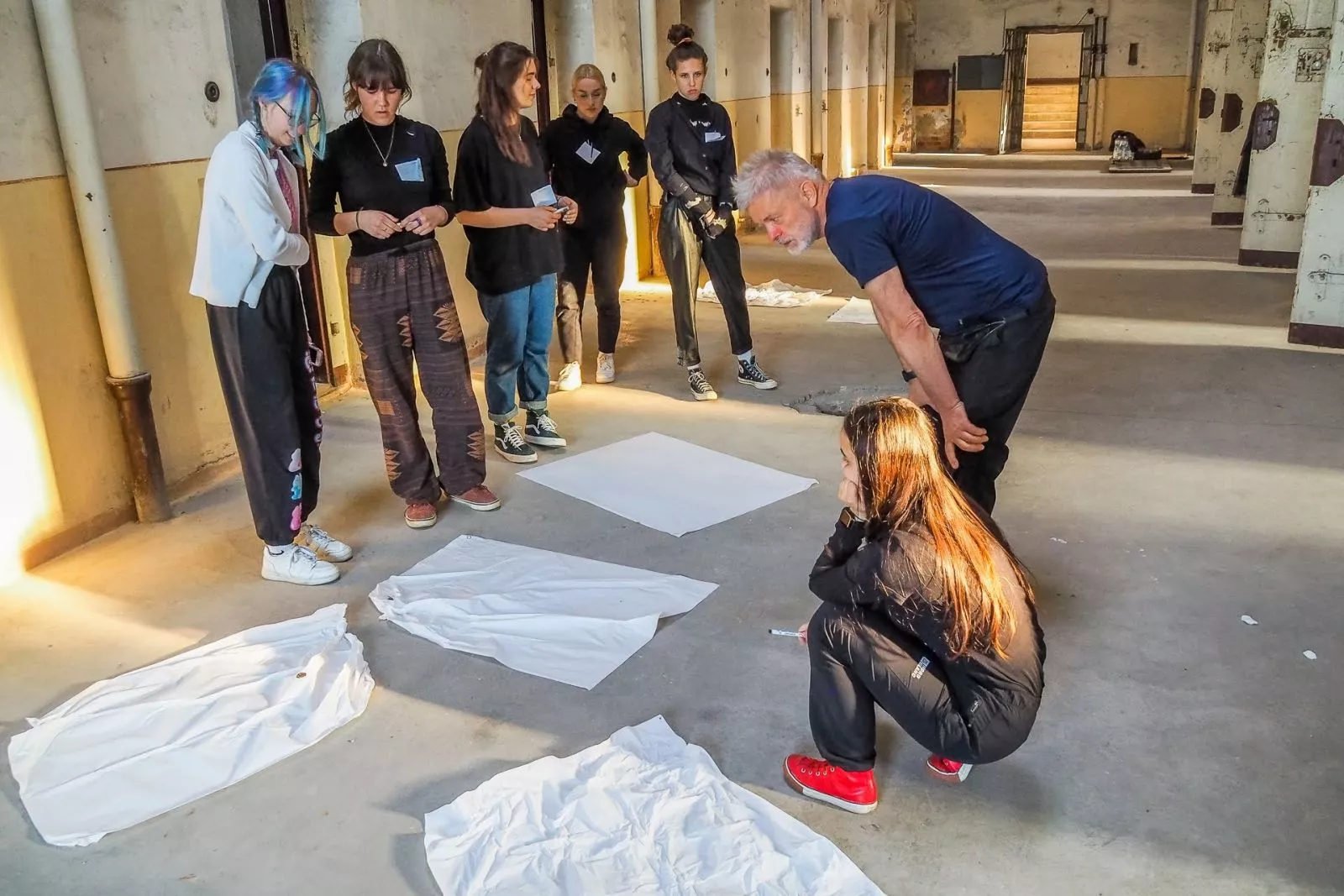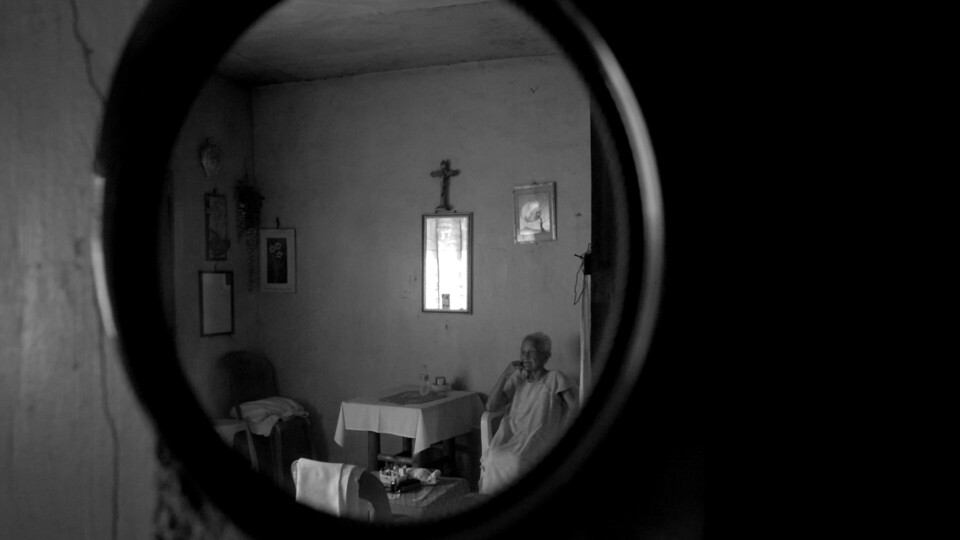Jan Gogola Jr. and Matěj Hrudička. History as a polyphonic experience
Jan Gogola Jr. and Matěj Hrudička’s documentary The Prison of History opens up the dark past of a prison where torture took place in the 1950s. However, unlike Kristina Vlachová’s 2006 film on the same topic, Kauza Uherské Hradiště (The Uherské Hradiště affair), The Prison of History also deals with the present and seeks ways to rediscover the meaning of history in contemporary society. The film is in the competition section of this year’s One World Festival.
When Jan Gogola Jr. was approached by Anna Stránská, founder of the Memoria Initiative for the Dignified Use of the Prison in Uherské Hradiště, with a proposal to make a film about the future museum planned for the site, he initially refused. He agreed only on the condition that students from the Audiovisual Arts Studio of Tomáš Baťa University in Zlín would join the project. Gogola’s student Matěj Hrudička thus stood by his side as co-director. After this first experience with documentary filmmaking, Hrudička is now working on his live-action graduate film Malý útěk (A little escape). Following Petr Januschka’s Island of Freedom, it is the second film from the Audiovisual Arts Studio to succeed on Czech Television’s film accelerator programme Akcelerátor.
What did your collaboration look like? How did you divide up your tasks? In what ways did you complement each other, and how did you differ?
Matěj: It was a dialogue from the beginning. It was an equal collaboration.
Jan: We wanted various worlds to meet both in front of and behind the camera, so the crew was made up of students and teachers from the Audiovisual Arts Studio. If we were able to intersect behind the camera, it could mean that the film would reach audiences ranging from teenagers to the elderly. It’s a collective work, and there’s no single main character. Except one – the prison itself.
Do you think you enriched each other?
Matěj: I think so, yes – regarding how to think about the film during the shoot. I learnt how when I want to answer a question, I can create a situation that I’ve only prepared conceptually. Working on the film also involved discovering ways to think about the past and what’s going on around me.
Jan: For me, the most enriching thing was that I got to meet with a group of young people who knew next to nothing about the building and for whom it became a personal issue. Even the students from the applied arts secondary school, who have class in the compound every day, don’t know much about the prison. By spending so much time on a film that goes well beyond the dimensions of the documentaries that are made in our studio, the student crew showed that it was important to them.
So, was it originally intended to be a smaller project?
Jan: The film grew unintentionally. Many people took turns on it because students were working on other films over the course of the shoot and not everyone could always participate due to the rhythm of the studio. Five cinematographers and an equal number of sound engineers worked on the film until a permanent sound engineer and cinematographer could be found, who then worked on it until the end.
The resulting film is ninety-four minutes long. What was the original intended running time?
Jan: I was aiming for a length of seventy or seventy-five minutes, but thanks to the relaxed way in which the film was made, the running time could be as long as the material called for. Now we are going to cut a fifty-two-minute version for Czech Television.
Matěj: I wasn’t originally planning on a feature-length film, but we slowly began to realise that the project demanded it and that it wouldn’t fit into a shorter running time. We even had to cut a few powerful scenes to fit it into the classic ninety-minute format.
“For us, it was about a polyphonic perception of history, a counterpoint of life experiences.”
What prompted your cooperation with Anna Stránská, the founder of Memoria, who also became one of the characters in the film?
Jan: I’ve known Anna Stránská since she was a baby; her parents are some of my closest friends. The Stránský family deserve most of the credit for the fact that the prison is still standing and that no one built a parking lot, department store, or amusement park on the site fifteen years ago. About five years back, the Stránskýs approached me to direct the film, but at the time I wasn’t inclined for personal reasons. I only accepted the offer under the pressure of circumstances. When I returned to Uherské Hradiště after my studies, I was increasingly burdened by anxiety. The anxiety of being a member of the Velvet Generation and being partly responsible for the fact that there is a hole not only in the city centre but in our entire society. For the fact that we have failed to do something here. And that our complaints about the younger generations’ lack of awareness are our own fault.
Matěj: The Stránskýs advocated for the realisation of the project. Our task was to guide them so that we wouldn’t end up making three films with all the connections they found. The goal of all of us was to raise awareness about the prison and to capture the building’s past and present.
Jan: The Stránskýs are a good example of how it is always both personal and political and of what kind of impact the actions of an individual or several people can have. In recent years, Anna and her parents have revitalised the prison with visits, exhibitions, and theatre productions. Anna’s cousin is the sound engineer, and her uncle provided the poster for the film. Thanks to the fact that one or two people care about where they live, even Minister of Culture Martin Baxa has acknowledged the significance of the project. Anna is an important character because she brings to life a history that we cannot go back to but that we are living right here and now.
The film looks at history from different perspectives. How did you achieve a balance of views so that the documentary doesn’t condemn anyone?
Matěj: We didn’t want to make a film about the trials in the 1950s but rather about a building that has a role in the past, present, and future. So, we looked for people with different opinions as well as different ideological and cultural backgrounds. We were able to track down Mrs. Černá, who was imprisoned there in the 1950s, and the director and former communist official Jiří Svoboda, who made a film in the prison in the late 1980s called About Family Affairs Only, which harshly criticised the political trials of the 1950s. Our documentary also features people who would like the prison to be replaced by a parking lot because there is nowhere to park. Or others who would like to see a block of flats in its place because it’s difficult to find housing. These issues have a place in the dialogue too. The point is not to create a place of official whinging, as Ivan Palacký says, but to find a place for the past in contemporary society.
Jan: It’s not just a constellation of “communism/anti-communism” or a purely political or ideological position. For us, it was about a certain polyphony, a perception of history as a chorus, a counterpoint of life experiences. We also included the prison’s neighbours, who have lived next door for decades, and the staff of an after-school programme who spent their working years there, and we asked them how they could be happy in such a place. Our memory is also shaped by the forms and principles of recording, and so we included excerpts from the film About Family Affairs Only, 8mm footage of May Day parades in front of the prison in the 1950s, and mobile phone footage. In addition to the ideological layer, we also touched on the generational, social, technological, media, and natural layers. We even looked at it from the perspective of beetles and ants, and so we are reminded that in addition to our own history we are also dealing with the history of other species. Our life experience will be more meaningful if we can open ourselves up to the world in these various layers. A tennis ball found on the prison grounds can be a medium of life experience. When a graduate of the applied arts school, who sat here in the ’70s and ’80s, throws it against the wall of the prison and it is caught by a recent graduate, that is a transgenerational transmission of experience. If I open myself up to another possible meaning of this potential prop, I can give this shadowy place a different shape and meaning.
“The shape of the prison changes based on who enters it.”
In one scene you confront a woman and her daughter with the fact that their father/grandfather, an officer of the National Security Corps, carried out brutal interrogations in the prison. How did this scene come to be, and what is its purpose?
Matěj: It was important for the actors to come face to face with their past. We shot this scene sensitively, but the meeting of such contradictory historical contexts, which are connected with family, will always be painful. But if we forget them, there will be no resolution. Without confrontation, it would be meaningless.
Jan: I think it was important that we didn’t go over the situation with them beforehand. I thought about showing them the footage prior to the shoot. But maybe then they would have come up with some platitudes and we would have lost the physical vitality of the history, the moment of discovering that our personal history is not what we think. In the reactions of Mrs. Opočenská and her daughter, we see that this is not something that happened in the past, that history is a natural part of us. The daughter said that she never had the opportunity to hear her grandfather out. But she had the opportunity for a long time; it just wasn’t important to her. In my eyes, they should have had this confrontation a long time ago. It raises the question of how much we are actually interested in learning something. If we don’t address unpleasant issues in our families and personal lives, we can’t do it in the public space either.
You’re right that they were at a disadvantage and on thin ice. If they had told us during the authorisation stage to cut the scene, we would have done it. Otherwise, I’d feel like I was behaving like their grandfather. The most important thing to me about the whole situation is that they came back a second time. They agree with the way the film looks, and they have been in contact with the historian and requested additional materials from him. I think that this is a lesson and that it’s better to meet like this than to live parallel lives.
Do you think that by confronting the past people can rid themselves of fear and darkness? And can our entire society be transformed in this way?
Matěj: Probably not all at once, but in stages. After watching the film, you start to think differently, both about the big history and about your own family history that you experience in your own town, street, or house. And you find that it’s not about going to a museum every now and then and looking at a display case with a sign that says “careful, do not touch”, but that we carry history within us and live in it every day.
Does this mean that society can transform the moment people become interested in their personal histories but at the same time there has to be a key that leads them to do so, like a film?
Matěj: I hope that film can work that way.
Jan: Our film is essentially a polemic. When the students of the applied art secondary school cast their shadows on the darkened façade of the prison at night, they use their bodies to create a face that has never been there before. The building, and by extension history, takes on a face, eyes, and mouth when we enter it, like when we step into water and ripple its surface. The shape of the prison changes based on who enters it. This place does not always remain the same place. It is saturated with darkness, evil, and violence, and perhaps it would be our failure to ignore that it can be illuminated and filled with other possible perceptions. The musicians Palacký and Pavlica will notice that the tiles on which thousands of other feet, bodies, and tragic destinies have walked are wobbly and turn them into a xylophone. I’d like it if the museum rang with the sound of people. Interactivity doesn’t have to be through a computer, monitor, or technology; it can be connected to the very substances of plaster, tile, and light. A memory of sounds will arise in which those who suffered or died in this place will come alive, and we will walk in their sonic footsteps.
“Even the social bubbles we live in are cells.”
In his observational documentary Austerlitz, Sergei Loznitsa depicts a former concentration camp with crowds of visitors streaming through it. They all know what happened there, but they pass through the place without meeting each other. What can be done to actually bring people together in places like these?
Jan: We have a big problem being together somehow, but we are offering an agora, a forum. We work with the principle of situationality, with the possibility of meeting here and now. When we’re talking about communism, we can’t come together, but as soon as director Svoboda starts explaining to me what he lived through growing up during the Second World War, I realise something obvious – that other people are born into different contexts than me. It’s a kind of social empathy, a moment of inhabiting someone else’s skin or experience.
When Vladimír Kokolia locks the students in the cells, you can laugh at it, but only until an eighteen-year-old girl utters one of the most important lines of the film – that the people outside didn’t see those inside, but the people on the inside saw the ones outside. Even the social bubbles we live in are cells. We are confined in ghettos, in discourses, and we try to see the people outside the walls. This mix of historical awareness and intimacy is important, so that the museum is not just about memorisation. When actors bring something to the prison that could become part of the exhibit, they create a relationship with the place they are donating to. By leaving something there, the place leaves something inside of them too.
Matěj: The big history is very abstract; it’s an archive that’s hard to relate to personally. Like when in a museum we feel obligated to be sad about some dark past. We want to show history as a tennis ball bouncing off the wall. By catching it, we are reaching out to the past. It is through this physical everyday existence that one can connect most with the past. By locking someone in a cell, letting them stare at a white wall for five minutes, and seeing what it does to them.
So, history as an adventure experience?
Jan: Yes. Unless a memorial has some kind of experiential dimension, it will simply be an ordinary museum. Even politics should have some kind of performative situational element of an intimate nature. The language, the symbolism, the rhetoric of politics has been exhausted; politicians aren’t creating an agora, a forum where people can meet. There’s nothing to grasp onto.
Matěj: The past is swept aside so that we don’t have to deal with it. The other side rarely gets a voice, so we see them as the descendants of the bad guys. If we view history in such a one-sided way, it will backfire on society someday.
I agree. Society is flattening itself by dividing itself into good and evil. We’re losing the human element, which isn’t black and white.
Jan: I think the opinion of Zděněk Homola is important here. He says that each of us can believe what we want, but we should not convince others through extreme means. Violence always begets violence, though capitalist violence is not so visible and intense and consists in, for example, social conditions, child labour, and the fact that people die in the same position they were born into. Jiří Svoboda talks about social equality face to face with a political prisoner who sat in prison precisely because of that social equality. Instead of looking for boundaries, we can understand history as a polyphony that we enter with specific principles and values.

